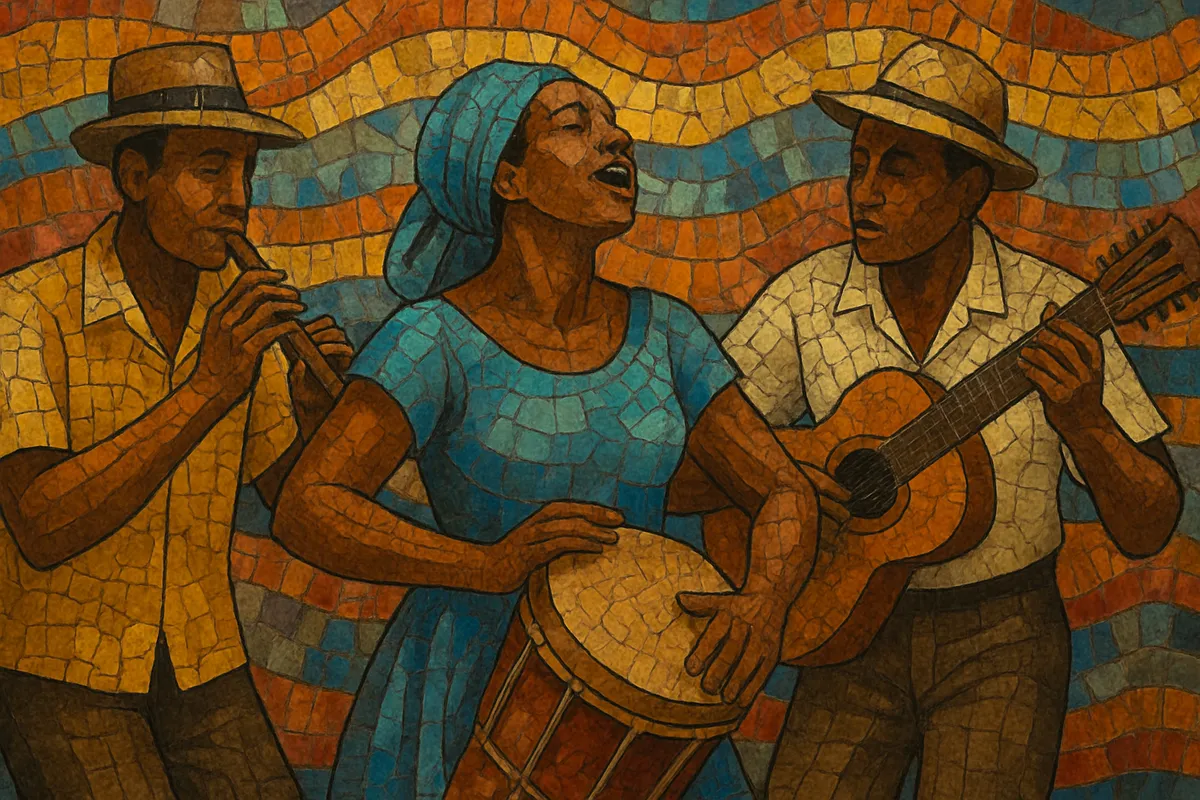Calipso venezolano (Venezuelan calypso) is a Carnival-centered Afro-Caribbean style rooted in the mining town of El Callao in the Guayana region of southeastern Venezuela. It blends the melodic and lyrical sensibilities of Trinidadian calypso with Venezuelan folk instrumentation, Spanish-language lyrics, and local rhythms.
Typical ensembles mix cuatro, guitar, bandolín, maracas, campana (cowbell), caja and bombo (snare and bass drum), and, increasingly since the mid-20th century, steel pans. Songs are usually mid-tempo, rhythmically lilting and syncopated, with call-and-response choruses and witty or celebratory lyrics that reference Carnival, daily life in the mining communities, and regional identity.
The style is a living tradition tied to the famed El Callao Carnival (inscribed by UNESCO as Intangible Cultural Heritage), where costumed comparsas, Madamas, and street bands animate processions with infectious calipso grooves sung in Spanish, English, and local patois.
El Callao experienced a gold-mining boom in the mid-to-late 1800s that drew migrant workers from the nearby British and French Caribbean, especially Trinidad and Tobago, as well as other Antillean islands. These communities brought calypso songs, Carnival customs, and English- and patois-language verse traditions. In the 1880s, these influences intermingled with local Venezuelan folk practices and instrumentation, laying the groundwork for calipso venezolano.
As the music localized, singers increasingly performed in Spanish (often code-switching with English/patois), adapting Trinidadian calypso’s topical, humorous, and satirical lyrics to Guayana’s mining-town realities. Ensembles favored cuatro, maracas, guitar, and percussion typical of Venezuelan folk music, while retaining calypso’s syncopated feel and call-and-response structure. Carnival processions in El Callao became the principal venue, cementing the style as a communal, street-music tradition.
From the 1940s–1960s, contact with Trinidadian bands and the spread of steel pan ensembles deepened the musical exchange. Steel band textures entered some groups, and radio and recordings helped popularize emblematic songs (including widely known calipsos about El Callao and its “Madamas” figures). Touring folkloric ensembles and choral groups from Guayana and Caracas helped present calipso venezolano on concert stages while keeping its Carnival core.
In recent decades, community ensembles, school groups, and folk collectives have preserved and renewed the repertoire. The El Callao Carnival’s inscription by UNESCO underscored calipso venezolano’s cultural importance. Today it thrives in both street processions and staged performances, with modern arrangements that may add brass or drum kits while maintaining the genre’s hallmark mid-tempo swing, participatory choruses, and festive storytelling.


